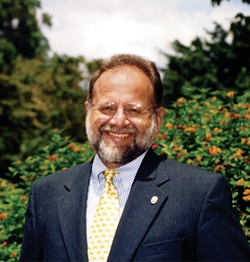 Reflecting on Food Security in Zaria, Nigeria 25th Anniversary Essay by 2002 World Food Prize Laureate Dr. Pedro Sanchez
Reflecting on Food Security in Zaria, Nigeria 25th Anniversary Essay by 2002 World Food Prize Laureate Dr. Pedro Sanchez
After talking with farmers at the Millennium Village in Pampaida, northern Nigeria, today became a good moment to reflect on the past 25 years, the present and the next 25 years. In 1986, I was beginning to focus on Sub Saharan Africa, because it was clearly an area with widespread and persistent hunger, untouched by the Green Revolution.
I lead a Rockefeller Foundation study to look at the importance of soil constraints in Africa and then I was named Director General of ICRAF (the World Agroforestry Center) and started travelling in the 20 countries where we had staff. I became convinced that soil fertility depletion was one of the fundamental biophysical reasons why cereal yields were stuck at one ton per hectare.
During my years at ICRAF, we worked hard to use nitrogen-fixing trees to raise yields, but most importantly, we made donor agencies and governments realize the need to invest in soil fertility, together with high yielding varieties, other agronomic practices and, most importantly, enabling policies. After finishing my two terms at ICRAF, I joined the Earth Institute at Columbia University in 2002 to inject agriculture into the group of interventions being designed to achieve the Millennium Development Goals by 2015. The Hunger Task Force of the UN Millennium Project, which I co-chaired with M.S. Swaminathan, recommended to then-UN Secretary General Kofi Annan that he call for a uniquely African Green Revolution, which he did in 2004. (The Hunger Task Force is celebrating a reunion this week in Des Moines, and now counts four World Food Prize Laureates in its membership.)
As a result of efforts by many organizations and countries, about 20 million Africans who were malnourished in 2004 are no longer so in 2011. But 20 million is less than ten percent of the hungry in Africa, and the task for the future is to reach the tipping point quickly and eliminate once and for all hunger in Africa. The experience of the Millennium Villages across Africa tells us that hunger elimination must be tackled together with malaria control and other health improvements, water and sanitation, education, and infrastructure in environmentally sustainable ways to be truly effective, involving governments, donors, scientists, the private sector and NGO’s. Still, that won’t be enough to have a prosperous world with “only” 9 billion people by 2050. To do so, the human fertility rate in poor countries must go down to 2 or 3 children per woman.
A ray of hope was given by an Ethiopian family in the Koraro Millennium Village that my wife Dr. Cheryl Palm and I interviewed. We asked a bright, 11-year-old girl finishing primary school what she would like to do and she immediately replied, "I want to be a doctor or a truck driver." We then asked her father what he thought about that, and he said in effect that his daughter will soon will be of marriageable age (12) and several colleagues have begun to make enquiries on behalf of their sons. The father said he expected an important dowry -- maybe a couple of cows -- but now that they produce enough food and have a clinic, he will support his daughter’s wishes. That girl will be educated, marry later and have fewer children. That is the bottom line.


